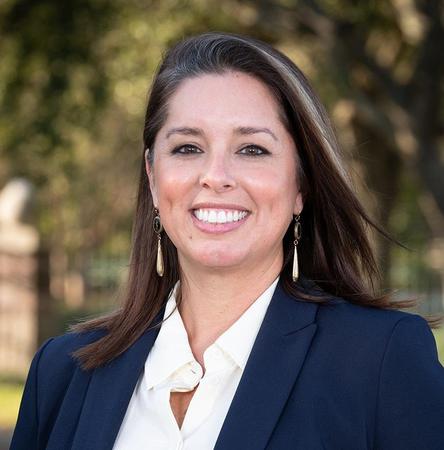Women and Retirement: Planning for Your Future, Fabulous Self
Whether you're a Millennial, Gen-Z, or even a Gen-A employee, one day you'll retire from the workforce. The hope is that our younger selves have saved appropriately so we can live out our golden years comfortably—and perhaps more fabulously and worry-free than you ever imagined.


Whether you're a Millennial, Gen-Z, or even a Gen-A employee, one day you'll retire from the workforce. The hope is that our younger selves have saved appropriately so we can live out our golden years comfortably, reaping the rewards of decades of saving and investing.
But how do we know how much to save? How do we know what amount to withhold from our paychecks, business endeavors, maybe even an inheritance, and for how many years? How do we know what to invest in, for growth and/or for preservation?
The only way to accurately know is to have a financial plan in place—otherwise, it’s like throwing darts at a dart board, while blindfolded. Also, how do you juggle retirement planning with other more short-term goals? Again, this is where a financial plan comes in handy. Think of it as a roadmap for your future; factoring in short, mid, and long-term goals.
An effective plan should recognize the risks faced by investors beyond market volatility, including:
- Longevity: The possibility that you will outlive your assets.
- Judgment: The possibility that you will retire too early, spend more than your investments can sustain, or, fail to withdraw less from your retirement funds when markets turn choppy.
- Behavioral: The possibility that you will sell holdings out of panic when markets decline or, in some cases, chase gains out of exuberance when markets rise. In other words, the possibility that you will buy high and sell low. (Retirement Planning; Goals Planning System, 2022 Morgan Stanley Smith Barney)
To avoid these risks, one must work with a financial advisor to create strategies, specific to your needs and build out a portfolio that takes into account your risk tolerance, income, expenses, goals, inflation, and years left to save, and then regularly measure the portfolio's performance.
I like to divide up the retirement-focused portfolio into 3 buckets:
- Bucket 1: Near-term needs, 1-7 years. When the day comes for you to retire, you don’t just suddenly “cash out” and sell your entire portfolio in order to fund your day-to-day life. Instead, the portfolio should be split into short, mid, and long-term investments. Bucket 1 helps to ensure cash is available, even during market declines, to supplement income, medical expenses, travel, and any other short-term needs. This bucket houses the least risky investments, usually fixed income and cash equivalents.
- Bucket 2: Mid-term needs, 7-15 years. This bucket will be riskier than the first. I call this the “balanced bucket”. It may be closer to 40 percent fixed income, 40 percent equities, and 20 percent alternative investments, such as REITs. As funds are used from Bucket 1 the income and/or sale of holdings, derived from Bucket 2 will replenish Bucket 1.
- Bucket 3: Long-term needs, 15+ years. This is your riskiest bucket, consisting largely of equities and some long-term fixed income. This is the bucket that drives the majority of the market volatility in a portfolio, since it is largely stocks. Typically, when the market is up this bucket will move in unison, alternatively, when the market declines you may feel the most volatility, as we have seen this year. Keep in mind, Bucket 3 should not be touched for years to come (15-plus years), as it is growth-focused and can drive much of the returns of the portfolio.
The financial plan is dynamic—it can be adjusted for changing needs, to minimize taxes, adjust for inflation, a change in health, the sale of a business, and even incorporate new investments, such as an annuity.
Your plan should reflect what you care about most, and, hopefully, reduce the risk of outliving your assets.
Get exclusive access to fashion and beauty trends, hot-off-the-press celebrity news, and more.
No matter your age or stage, there is no better time than right now to reach out to a financial advisor to have your financial plan, the roadmap to your future, completed.

Jacey J. Cosentino is a Financial Advisor at Morgan Stanley.
Other Must-Reads: Your Guide to the 4 Types of Investments

Bonds, stocks, and alternatives. Investing for beginners all starts with understanding the basic asset classes.
Disclaimer: The views expressed herein are those of the author and do not necessarily reflect the views of Morgan Stanley Wealth Management or its affiliates. All opinions are subject to change without notice. Neither the information provided nor any opinion expressed constitutes a solicitation for the purchase or sale of any security. Past performance is no guarantee of future results. This material has been prepared for informational and Illustrative purposes only. It does not provide individually tailored investment advice. It has been prepared without regard to the individual financial circumstances and objectives of persons who receive it. This material does not provide individually tailored investment advice. It has been prepared without regard to the individual financial circumstances and objectives of persons who receive it. The strategies and/or investments discussed in this material may not be appropriate for all investors. Morgan Stanley Wealth Management recommends that investors independently evaluate particular investments and strategies, and encourages investors to seek the advice of a Financial Advisor. The appropriateness of a particular investment or strategy will depend on an investor’s individual circumstances and objectives. The investments listed may not be appropriate for all investors.
Morgan Stanley Smith Barney LLC recommends that investors independently evaluate particular investments and encourages investors to seek the advice of a financial advisor. The appropriateness of a particular investment will depend upon an investor's individual circumstances and objectives. Morgan Stanley Smith Barney LLC (“Morgan Stanley”), its affiliates and Morgan Stanley Financial Advisors or Private Wealth Advisors do not provide tax or legal advice. Clients should consult their tax advisor for matters involving taxation and tax planning and their attorney for matters involving trust and estate planning and other legal matters. Information contained herein has been obtained from sources considered to be reliable, but we do not guarantee their accuracy or completeness. Morgan Stanley Smith Barney, LLC. Member SIPC. ÜRC4945211 09/22._

I am a Financial Advisor for Morgan Stanley, where I assist individuals, families, businesses, foundations, and non-profits with modern, comprehensive, mission-aligned planning and service. I am based in Pensacola, Florida.